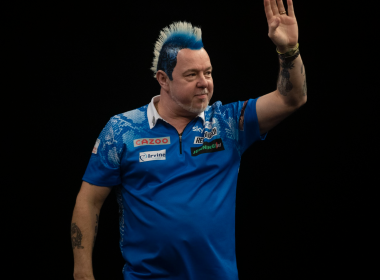A case for abandoning traditions?
The World Cup of Darts is upon us again. The one tournament on the calendar offering the chance to see people play for their countries, and as pairs, also gives rise to discussions of nuances like tactics and whether there’s any merit in them.
Players talk of different dynamics in pairs, such as rhythm and chemistry and how they suit some more than others. Of more interest to me is the seemingly automatic sequence of the captain throwing first in legs; assuming the role of ‘Player 1.’
Broadly speaking, you can slice up a leg into scoring, set-up (221-171) and finishing phases. In theory, players’ strengths and weakness should make them more adept at some of these phases than others, which wouldn’t matter an awful lot if their chances of featuring in one of those phases were entirely unpredictable. Our research tells us otherwise though, and in some cases the chances are very lopsided towards Player 1 or Player 2 being in a particular situation based on the common patterns of legs.
Naturally, Player 1 toes the oche most often in the scoring phase, by a ratio of 58% to 42% of turns. On this alone, it makes sense to have your heaviest scorer kicking off proceedings. In the scoring phase there are certain starting numbers tending to require throwing at different targets to optimize the chances of leaving a finish (e.g. 309, 308, 306, 305 etc. when the astute darter begins on segments other than T20). In these moments lending themselves to a T18 or T19 start, at such a high level you’d expect everyone to be aware of the situation but as we know, it isn’t always the case. Those visits fall to Player 1 in 86% of instances, perhaps not such good news for the Portugal team with Jose De Sousa’s history of miscounts and leaving bogies. Even in the case of Portugal though, this wouldn’t be enough to warrant a swap for Jose into the Player 2 slot, with his scoring being his strongest weapon and far superior to his partner’s.
At the set-up stage of a game, you want the player most likely to get you down to a double and these starting scores of 171-221, as we shall categorise them, fall to Player 2 more frequently (66% of the time). The best of the World Cup field at setting up from here are Gary Anderson, Luke Humphries and Martin Schindler, according to recent data.
When we reach the business end, where legs are won and lost, it’s almost a 50/50 split of all outs from 170 down that fall to Players 1 and 2. On the other hand, if we sub-categorise all finishes we see 78% of those between 161 and 170 falling to Player 2. The most prolific of the PDC in 2024 at nailing these has been Ireland captain Willie O’Connor, who’s been six times more likely than his partner, Keane Barry. O’Connor’s average with his first 9 darts over the same period is also 3 points higher than Barry’s, making it a difficult trade-off (O’Connor’s chances of taking out a 161+ if left with one, still only amount to 12 per cent). For finishes between 101 and 120, 75% of them fall to Player 1 and it is Canada’s Matt Campbell who has been most deadly in this range, of all participants in 2024. As captain, Campbell can expect to be the one approaching the board for three quarters of those opportunities if trends remain intact.
The question is, does any of this make a notable difference and should countries be tempted to switch their order? Are the statistical trade-offs worth it, overall? As the scoring phase of a leg is likely to constitute its majority in turns, this is where the biggest impact would be made and so yes, if you have one player who is stronger in this department, it makes definite sense for them to begin if all other things are more-or-less equal. The most obvious example is Gary Anderson – the heaviest scorer in the world in 2024 measured by average with first 9 darts and due to go second in legs if traditions are applied. With Anderson’s first 9 per leg he can be expected to outscore Wright by 11 points if the seasonal norms continue in Frankfurt. Two other pairings face something similar, although not as dramatically so: Austria and Czechia should both consider the same switch, so their automatic Player 2s (Suljovic and Sedlacek) are afforded more arrows to do the early damage. In the case of the Austrians the difference is almost 6 points for every first 9 darts thrown in favour of Mensur, and for Czechia it’s a more modest 3 points for Sedlacek over Gawlas.
For the major darting geeks out there, below is a table showing the likelihood of Players 1 and 2 having the throw in various scenarios.

With the welcome change to this event now meaning all matches are pairs, these things certainly carry more weight than they used to. The difference between victory and disappointment in elite sport can come down to fine margins. Whether they really affect the final outcome next week, us geeks can debate. Will anyone break tradition?
Lendel Faria












